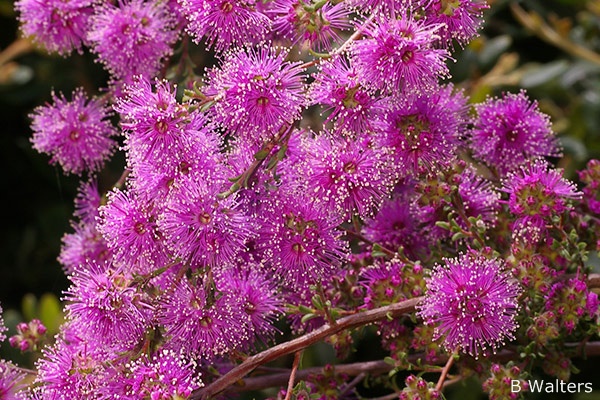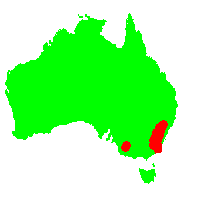General Description:
Kunzea is closely related to the genus Callistemon (the bottlebrushes) and also bears some similarity to Melaleuca and Leptospermum. There are about 40 species occurring in all states and territories. One species also occurs in New Zealand. They are small to medium woody shrubs and the majority occur naturally in south Western Australia.
Some of the main differences between Kunzea and its close relatives are:
- The five sepals and petals are deciduous (persistent in Callistemon).
- The stamens are longer than the petals (shorter in Leptospermum).
- The stamens are free (united in five bundles in Melaleuca).
- Seed is released from the ripe fruit annually (usually retained on the plant in the other three genera).
Kunzea parvifolia is usually a erect shrub to about 1 metre in height, however, a prostrate form has also been in cultivation for many years. The leaves are small (usually less than 5 mm long). The small pink to mauve flowers are clustered into globular-shaped heads at the ends of the branches and are very profuse and conspicuous. The flowers which occur in spring are followed by small 1-celled fruits which release numerous small seeds when ripe.
This species has been in cultivation for many years and is generally a reliable plant for temperate climates and in all but waterlogged soils. It withstands at least moderate frost. Because of the wide natural distribution of the species, best results are obtained if forms native to a similar climate to the grower’s location are selected. For example, the prostrate form is difficult to maintain in areas with humid summers.
Propagation of K.parvifolia is easy from both seed and cuttings. If seed is being collected, the plants need to be kept under observation or the seed will be lost.

Kunzea parvifolia
Photo: Brian Walters
 Australian Native Plants Society (Australia)
Australian Native Plants Society (Australia)